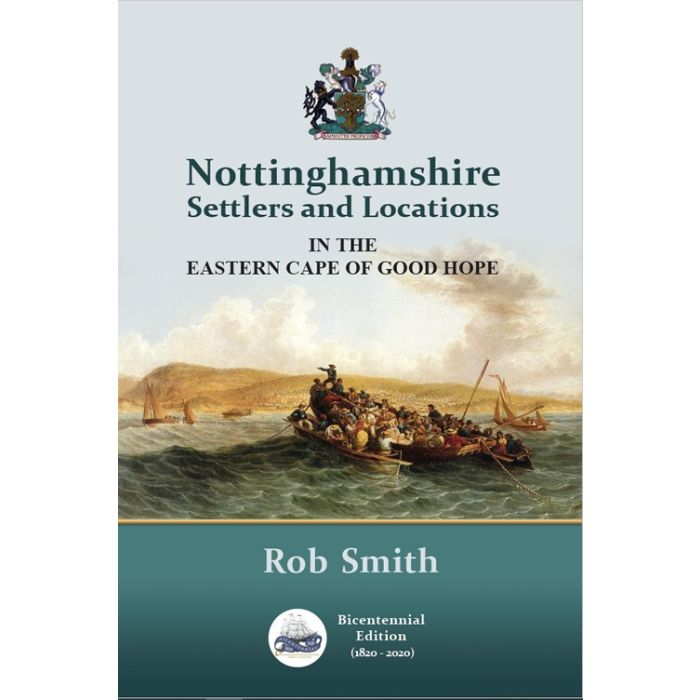Nottinghamshire
| Weight | 1.700000 |
|---|---|
| ISBN13/Barcode | 9781990972034 |
| ISBN10 | 1990972039 |
| Author | Smith, Rob |
| Binding | Paperback |
|---|---|
| Date Published | 1st November 2021 |
| Pages | 226 |
| Publisher | Blue Weaver Marketing |
Settlers and Locations in the Eastern Cape of Good Hope: Bicentennial Edition (1820 - 2020)
This 600 plus paged book, meticulously researched by Rob Smith, tells the story of the Nottinghamshire 1820 Settlers.
The two parties from Nottinghamshire were representative of typical settlers, suffering many communal trials and tribulations, and participating in outstanding achievements. Ultimately, they were successful in their new home, a land of immense opportunity.
The four parties with Nottinghamshire participants were White’s, Damant’s, Calton’s, and Sephton’s. The other principal family in the party with the Damants was the Atherstones with their strong ties to Nottinghamshire. It is appropriate to consider the Damants from Norfolk and the Atherstones from Nottingham as one extended family at the head of the only emigration party assembled in Norfolk. Dr John Atherstone was born in Nottingham in 1791, qualified as a doctor at Guy’s Middlesex Hospital, and married Elizabeth Damant. "It is no exaggeration to state that the Damants, Whites and Atherstones formed the nucleus of a dynasty at the Cape and certain family members were destined to become some of South Africa’s most influential individuals.” Separate chapters deal with Henry Hartley, the hunter and explorer who rediscovered the ancient gold workings in Tati (now Francistown) that led to the first southern African gold rush; Dr Guybon Atherstone (who identified the Eureka diamond and performed the first amputation in southern Africa using anaesthetic); and the White family of Albany (whose scion T.C., Thomas Charles, was his own man, a stubborn and caustic character but a champion for the underdog and the unfortunate).
